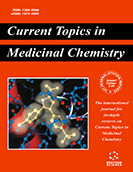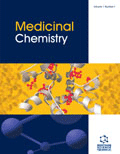Abstract
The striatum has long been known to be involved in the control of motor behavior, since disruption of dopamine-mediated function in this brain structure is directly linked to Parkinsons disease and other disorders of movement. However, it is now accepted that both dorsal and ventral striatal nuclei are also essential for a variety of cognitive processes, which depend on reward-based stimulus-response learning. Since the neuroanatomical and neurochemical organization of dorsal and ventral striatum is only partially overlapping, it is likely that both common and nucleus-specific cellular and molecular events contribute to synaptic plasticity, learning and memory processes mediated by these cerebral structures. Alterations in cell signaling in the striatum may be particularly important in the response to both acute and chronic administration of drugs of abuse, resulting in maladaptive changes in the reward-based associative learning involved in addiction, withdrawal and relapse.
Keywords: drug addiction, behavioral plasticity, striatum-dependent plasticity, parkinson disease, reward-based stimulus-response
Current Molecular Medicine
Title: Cellular Mechanisms of Striatum-Dependent Behavioral Plasticity and Drug Addiction
Volume: 2 Issue: 7
Author(s): Stephania Fasano and Riccardo Brambilla
Affiliation:
Keywords: drug addiction, behavioral plasticity, striatum-dependent plasticity, parkinson disease, reward-based stimulus-response
Abstract: The striatum has long been known to be involved in the control of motor behavior, since disruption of dopamine-mediated function in this brain structure is directly linked to Parkinsons disease and other disorders of movement. However, it is now accepted that both dorsal and ventral striatal nuclei are also essential for a variety of cognitive processes, which depend on reward-based stimulus-response learning. Since the neuroanatomical and neurochemical organization of dorsal and ventral striatum is only partially overlapping, it is likely that both common and nucleus-specific cellular and molecular events contribute to synaptic plasticity, learning and memory processes mediated by these cerebral structures. Alterations in cell signaling in the striatum may be particularly important in the response to both acute and chronic administration of drugs of abuse, resulting in maladaptive changes in the reward-based associative learning involved in addiction, withdrawal and relapse.
Export Options
About this article
Cite this article as:
Fasano Stephania and Brambilla Riccardo, Cellular Mechanisms of Striatum-Dependent Behavioral Plasticity and Drug Addiction, Current Molecular Medicine 2002; 2 (7) . https://dx.doi.org/10.2174/1566524023362005
| DOI https://dx.doi.org/10.2174/1566524023362005 |
Print ISSN 1566-5240 |
| Publisher Name Bentham Science Publisher |
Online ISSN 1875-5666 |
 4
4
- Author Guidelines
- Bentham Author Support Services (BASS)
- Graphical Abstracts
- Fabricating and Stating False Information
- Research Misconduct
- Post Publication Discussions and Corrections
- Publishing Ethics and Rectitude
- Increase Visibility of Your Article
- Archiving Policies
- Peer Review Workflow
- Order Your Article Before Print
- Promote Your Article
- Manuscript Transfer Facility
- Editorial Policies
- Allegations from Whistleblowers
Related Articles
-
Hepatic Encephalopathy: Cause and Possible Management with Botanicals
Recent Patents on Inflammation & Allergy Drug Discovery Targeting of Peripherally Expressed Pain-Related Molecules in Injury- Induced Chronic Neuropathic Pain
CNS & Neurological Disorders - Drug Targets Relevant Modulation by Ferrous Ions of N-Methyl-D-Aspartate Receptors in Ischemic Brain Injuries
Current Neurovascular Research Gene Therapy of Chronic Pain
Current Gene Therapy Hyperhomocysteinemia in Movement Disorders: Current Evidence and Hypotheses
Current Vascular Pharmacology Proteinase-Activated Receptor-2: Physiological and Pathophysiological Roles
Current Medicinal Chemistry - Cardiovascular & Hematological Agents Imaging the Neural Effects of Cannabinoids: Current Status and Future Opportunities for Psychopharmacology
Current Pharmaceutical Design The Impact of Nandrolone Decanoate on the Central Nervous System
Current Neuropharmacology Synthesis and Evaluation of [11C]SB207145 as the First In Vivo Serotonin 5-HT4 Receptor Radioligand for PET Imaging in Man
Current Radiopharmaceuticals 11C-verapamil to Assess P-gp Function in Human Brain During Aging,Depression and Neurodegenerative Disease
Current Topics in Medicinal Chemistry Neuro-psychopharmacogenetics and Neurological Antecedents of Posttraumatic Stress Disorder: Unlocking the Mysteries of Resilience and Vulnerability
Current Neuropharmacology Preclinical Pharmacology of mGlu2 / 3 Receptor Agonists: Novel Agents for Schizophrenia?
Current Drug Targets - CNS & Neurological Disorders Biochemical Differentiation of Cholinesterases from Normal and Alzheimers Disease Cortex
Current Alzheimer Research Are the Extracelluar Pathways a Conduit for the Delivery of Therapeutics to the Brain?
Current Pharmaceutical Design Neuronal Histamine and its Receptors in Obesity and Diabetes
Current Diabetes Reviews Hypothalamic and Neuroendocrine Changes in Huntingtons Disease
Current Drug Targets Cocaine Dependence and Stroke: Pathogenesis and Management
Current Neurovascular Research Nitric Oxide in Health and Disease from the Point of View of the Otorhinolaryngologist
Current Pharmaceutical Design Catatonia, Malignant Catatonia, and Neuroleptic Malignant Syndrome
Current Psychiatry Reviews [General Articles] Cannabinoids: Mechanisms and Therapeutic Applications in the CNS
Current Medicinal Chemistry

















.jpeg)








